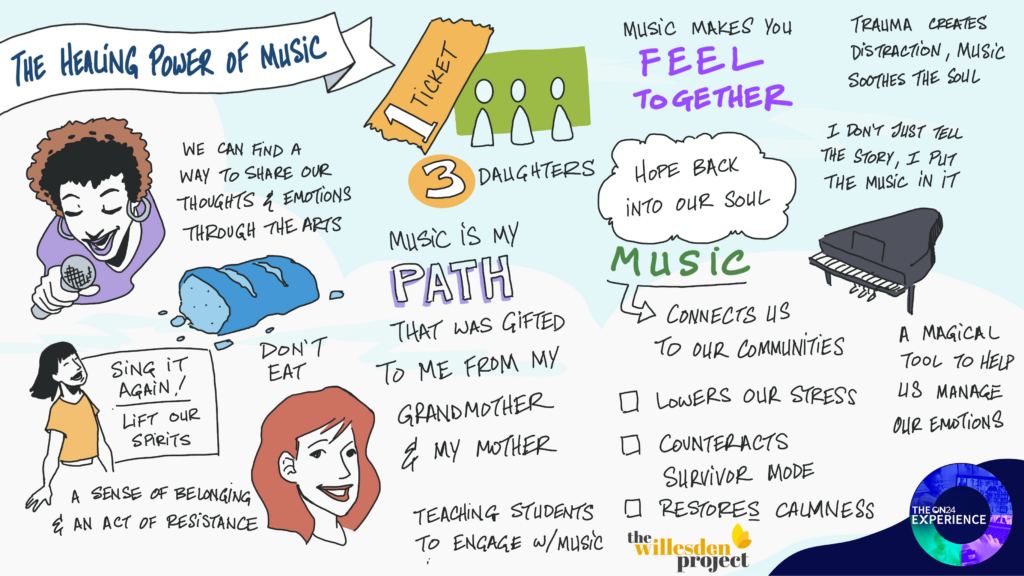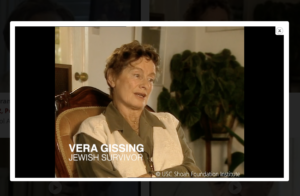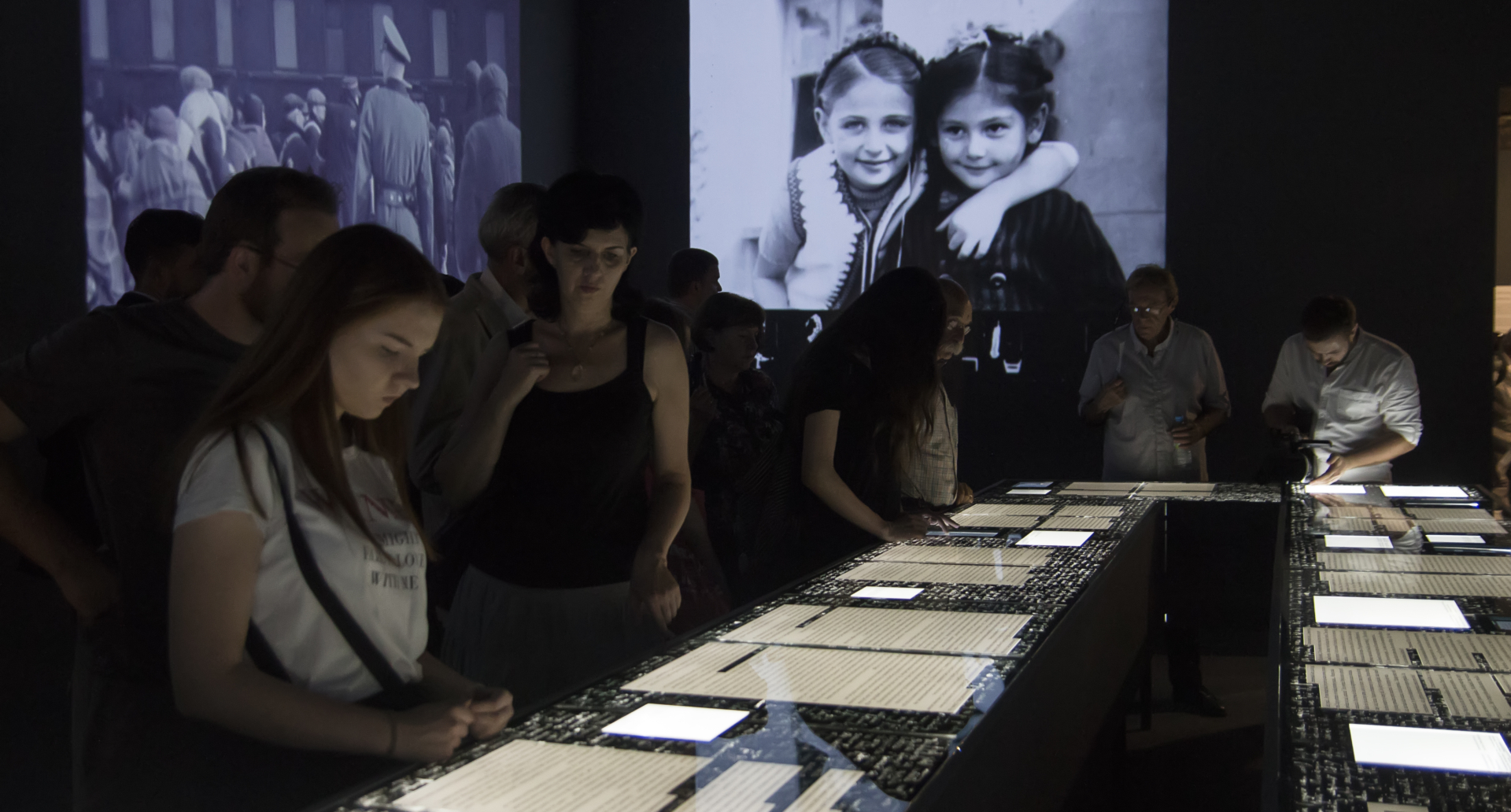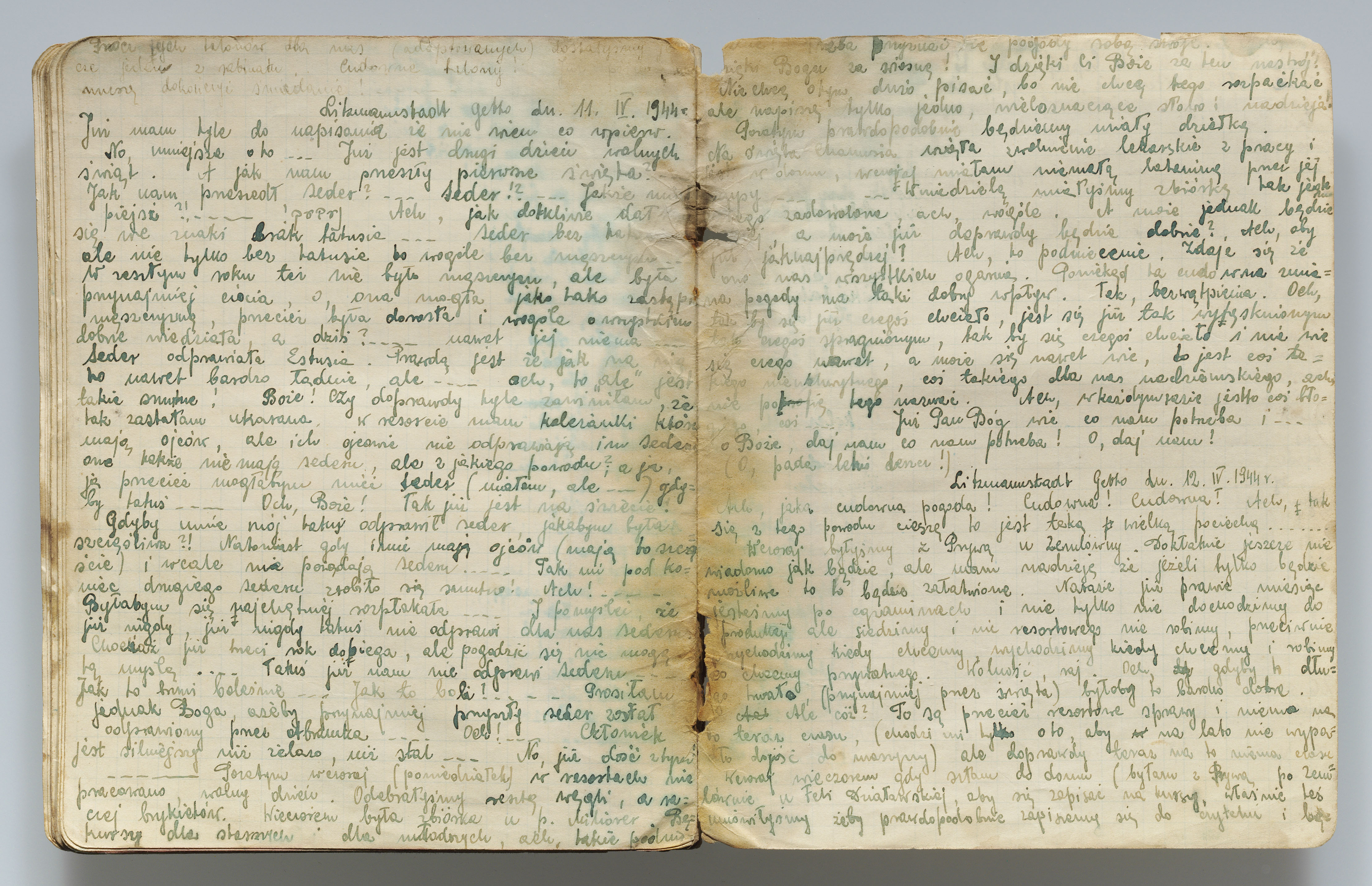Blending Holocaust testimony with music and technology
Blending Holocaust testimony with music and technology
“The Children of Willesden Lane” is a true story. It begins in Vienna in 1938, when it quickly becomes dangerous to be Jewish. The heroine of the story is a young girl named Lisa Jura, who dreams of becoming a concert pianist. Her family is Jewish, and her parents are able to secure her a spot on the Kindertransport to London, with many other children, to keep her safe. Her parents and two sisters hope to join her one day. At the train station in Vienna, Lisa’s mother tells her to “hold on to your music.” She doesn’t just mean the music Lisa is taking with her, but also the music in her heart, her dream. Lisa does, and this is only the beginning of a story that has captivated young audiences around the world. Lisa’s grown-up daughter, Mona Golabek, is a pianist too, and through music, she shares her mother’s story to encourage young people to follow their dreams in the face of seemingly insurmountable challenges.
Golabek has written three “The Children of Willesden Lane” books that tell this story, each adapted for children of progressive ages. She has also developed a live performance version, blending storytelling with classical piano music. Golabek’s Hold On To Your Music Foundation (HOTYM) is partnering with the USC Shoah Foundation Institute for Visual History and Education (USC Shoah) to pair her mother’s story with Holocaust testimony. This collaboration, The Willesden Project, will create a global “destination for testimony-based Holocaust and anti-bias education” for primary and secondary school students. (The project’s name commemorates Willesden Lane in London, a converted home for young refugees.) Holocaust education, supported by personal stories and testimony, helps students build empathy, understanding, and respect.
As a resource for educators, The Willesden Project is both timely and timeless. Lessons and personal stories from the Holocaust and other experiences of mass violence or displacement—presented in an age-appropriate manner—resonate with students who have themselves experienced traumas. These range from rising anti-semitism and Islamophobia to white supremacy, anti-refugee violence, and chronic poverty. Previously, story books have been the primary mechanism for teaching and learning about the Holocaust for students in grades K-8. Using video testimony and other technologies, including augmented and virtual reality, to teach this age group is revolutionary. Digital tools also serve to equalize access to Holocaust education by delivering primary sources and engaging experiences to all, wherever they may be.
Lesly Culp, acting director of education and outreach at USC Shoah, elaborates: “Story-based programming can advance students from being passive learners to becoming more actively engaged citizens. In addition to deepening their understanding of historical events, we want to cultivate their emotional intelligence to help them make sense of the world around them and empower them to take a stand.” Direct engagement with The Willesden Project’s programming in 2021 exceeded 350,000 teachers, students, and community members.
Teaching with testimony
USC Shoah has worked for over 25 years to preserve and increase access to firsthand testimony from the Holocaust and other genocides. Seventy-five years after the end of WWII, the accounts of survivors and witnesses are invaluable teaching tools to help us build more tolerant communities. Many thousands of survivor accounts have been recorded, and this testimony has come to seem even more personal and powerful in a soon-to-be post-survivor era.
USC Shoah’s entire collection of 55,000 video testimonies—each of which runs an average of two hours—is extensively indexed, so contents are highly searchable, and customizable to age-appropriate audiences. Short clips, usually just a few minutes in length, have been thoughtfully excerpted from many testimonies, to make engaging teaching tools. The Willesden Project takes advantage of the advanced technology developed by USC Shoah for IWitness (USC Shoah’s educational website), Dimensions in Testimony, and IWalks, tailoring content for younger audiences. These technologies bring Lisa Jura’s story and those of thousands of other children to life in a classroom, on the street, and at home.
In this clip, Vera Gissing recalls leaving Czechoslovakia with her older sister Eva on a Kindertransport. She describes two parting gifts from her parents that comfort her on the journey to England: a blank diary from her father, who urges her to write when she feels lonely or homesick or happy and has something she wants to remember; and a reassurance from her mother that she can use the sun by day and the stars by night as messengers if it’s not possible for them to write to each other.
Music as the universal language
In December 2021, The Willesden Project reached a milestone, the release of the new animated short film, Music Dreams. Visually, the seven-minute video magically interweaves two refugee stories without words. Conceptually, it explores refugee displacement and the power of music to inspire hope and healing. Through USC Shoah’s partnership with The Conscious Kid, Music Dreams was viewed over 10,000 times in its first month on The Conscious Kid platform.
Culp comments, “One of the project’s goals is to develop content that reflects the lived experiences of children from various backgrounds, including refugee children. Music Dreams brings these children’s voices to the table by making it accessible and culturally relevant. We are exploring ways to build content for individuals who may not have the digital tools at hand.”
In addition to “The Children of Willesden Lane,” Golabek has authored “Hold on to Your Music,” which tells the story of rising antisemitism, Lisa’s parents’ decision to send her to London, and her arrival at Willesden Lane, where she finds a piano…and perseveres to fulfill her dream. In January 2022, in honor of International Holocaust Remembrance Day, Golabek gave a full reading of an animated version of “Hold on to Your Music.” The 11-minute video read-along features Golabek’s piano playing in the background. Golabek ends her reading with a gentle, uplifting message: “Find your dream. Never let go. Remember, a piece of music can tell a story. What will be your story?” Golabek’s Citywide Reads performances have reached tens of thousands of students. The animated video has already been viewed more than 24,000 times via the partnership with The Conscious Kid.
Golabek reflects, “The partnership with USC Shoah will provide ways for my mother’s story to reach and teach children everywhere, indefinitely. I am thrilled by this opportunity to honor her and the imperative to ‘Never forget.’”

The Healing Power of Music webinar, presented by The Willesden Project in November 2021 for arts educators, featured Mona Golabek; Dr. Beth Meyerowitz, a psychologist who specializes in trauma; along with Dr. Monika Wiley, director of fine arts in the state of Georgia’s Clayton County Public Schools. Artist David Rodriguez of Journeyman Ink provided live visual notetaking from audience comments.
Walking in someone else’s shoes—on your hand-held device
USC Shoah’s approach to contextualizing and personalizing history through testimony will continue to leverage technology. A recent innovation for The Willesden Project is an adaptation of IWalks, which debuted in 2019. The IWalk pedagogical model offers multi-dimensional guided field trip walking tours for a specific historic location. Each IWalk visually situates testimony in time and place. Students can navigate a real-world space, such as the site of the Babyn Yar massacre in Ukraine, and engage with it through content—testimony, maps, secondary source text, and assessment questions—available on their smartphones or tablets.
The Willesden Project launched the first Virtual IWalk in January 2022. It takes viewers on an extended field trip, tracing Lisa Jura’s journey from her home in Vienna all the way to Willesden Lane in London. Thanks to technology developed by Google Street View, students can explore where they are (actually, where Lisa was). Soon, 360º video will be added. Survivors have been filmed giving their testimony on location, and these will be incorporated.
Culp concludes, “The next-generation Virtual IWalk technology empowers educators to take their students on revelatory online field trips that would otherwise be impossible without travel. They also serve to visually preserve, in a changing world, historic sites.”





